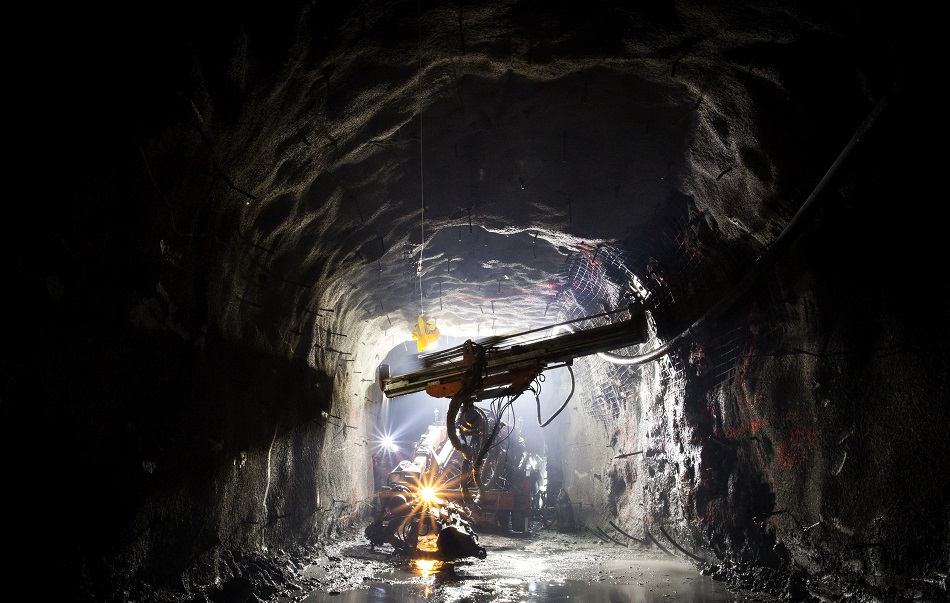Article Updated 26th July 2021/span>

Image Credit: I Made Pasek/Shutterstock.com
Since ancient times, heat treatments have been used in the mining industry in a variety of ways. There are three basic steps in heat treatment, of which heating is only the first. These are heating, soaking, and cooling. The five elementary heat-treating processes are hardening, annealing, case hardening, tempering, and normalizing.
A brief history and uses of heat treatment will be discussed in this article.
Fire Setting: The First Recorded Instance of Heat Treatment in the Mining Industry
In the first century B.C., the Greek historian Diodorus Siculus gave us the first recorded instance of a heat treatment being used in the mining industry: fire setting.
This primitive practice worked by applying a large fire to the rock face which needed mining, causing internal fractures in the rock face due to uneven heating, weakening the rock enough to be worked. Once the fire had died down, water was added to the rock face and then it was worked to extract the soft ore one foot at a time. Once the hard rock was encountered again, the process would be repeated. Rock was fractured by thermal shock.
The practice is likely to be much older than this, however. There is archaeological evidence from sites such as Rudna Glava in the Balkans of the practice’s use several thousand years BC. The thermal treatment gradually fell out of favor with the advent of the use of gunpowder in blasting in 1613, where it was replaced by much more efficient processes such as blasting and drilling.
Modern Heat Treatment Methods
Even though thermal treatment is no longer commonly used to extract ore from within a hard rock face, these methods are still used in various areas of the mining industry. Large amounts of water, which could be contaminated, may be present in raw materials that have to be removed.
A major use of heat treatment in the mining industry is in ore processing. Some ores, such as phosphate ore, can be difficult to process. Heat treatment can be utilized here to improve the efficiency of processing and thereby produce a higher grade of extracted material. Calcination is a term for such treatment.
In calcination, the desired material is placed into a chamber with an absence of oxygen and heated to extremely high temperatures. First, the product is dried, thereby losing any free moisture, then it is raised to the desired temperature in the calcining stage. Next comes the soaking stage, where a constant temperature is maintained, and finally the resulting product is cooled to a safe temperature.
Calcination is utilized in the processing of bauxite and gypsum to achieve hydrated mineral decomposition. It can also be used to remove the volatile matter from raw petroleum coke. Calcination is used to convert anatase to rutile, a mineral form of titanium oxide.
Thermal drying is another heat treatment process in mining. It is a process which dehydrates moist products. Heat is transferred to the material which needs to be dried. This can be achieved in different ways, either by heated gas or combustion products (convective heat transfer) or via contact with a hot surface. Other methods use high-frequency currents or radiation. This process is commonly used in the drying of raw coal coke and in wastewater sludge treatment.
A Proposed Modern Version of “Fire Setting” – The Use of Microwaves
As previously mentioned, one of the earliest known uses of heat treatment in the mining industry (apart from the use of kilns to process ore) was fire setting, the practice of setting large fires to gain access to the ore within the rock face. The practice fell out of use for several centuries until the early 20th century, with early attempts made in the Cornish tin mining industry and on quartzites.
However, these early attempts produced ore of inferior quality and strength, with fewer fines produced. Clearly, further research was necessary. Studies carried out in the latter half of the 20th century concentrated on the quenching process post-heat-treatment, with some proposing the use of acid or alkali solutions instead of water.
The process of conventional heat treatment was still uneconomical (some reports suggested the cost of heat treatment and grinding could be up to six times higher than grinding alone) and required high energy consumption levels. One recent method proposed the use of microwave energy. A study in 1997 showed that darker compounds would undergo more rapid heating, with temperatures of 10000C being reached very quickly and easily, whereas lighter colored ones heated slowly but could be heated to higher temperatures.
The heating ability of the ore within an electrical field has been found to depend upon the physical properties and composition of the ore in question. For example, high iron sphalerite heat quite well after a period of low heating, whereas low iron sphalerite does not. Studies have found that compounds such as carbonates and sulfates are transparent to microwave energy, whereas most arsenides, sulfides, and some oxides heat well when microwave radiation is applied.
Whilst the interaction of mineral ores and microwave energy is still relatively poorly understood, studies are ongoing into this promising technology, which may represent one of the future applications of a method similar to one that was used in the millennia until recently.
Sources and Further Reading
Disclaimer: The views expressed here are those of the author expressed in their private capacity and do not necessarily represent the views of AZoM.com Limited T/A AZoNetwork the owner and operator of this website. This disclaimer forms part of the Terms and conditions of use of this website.